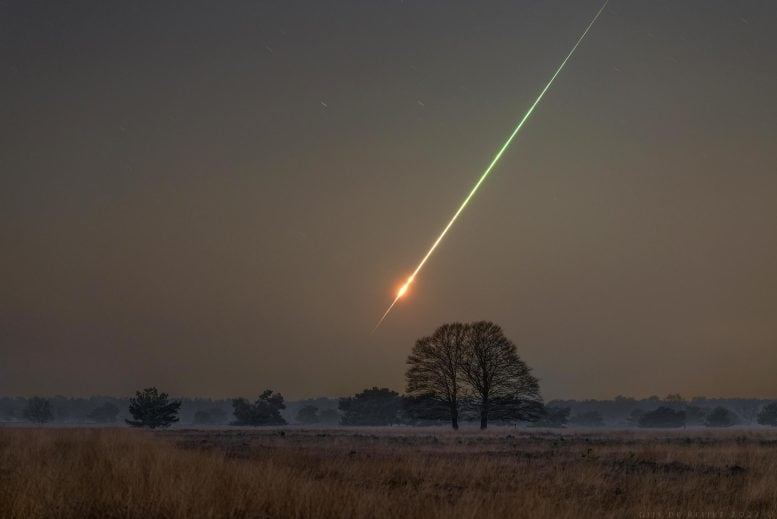
Asteroid 2023 CX1 entering Earth’s atmosphere captured in the skies over the southern Netherlands. Credit: Gijs de Reijke
Seventh Shooting Star Ever Spotted Before Impact
For the seventh time, a small asteroid – a meteoroid as astronomers call it – was discovered in space as it raced towards Earth for impact. The predicted time and location of the impact (02:50 – 03:03 UTC, above northern France) were made possible with observations by European astronomer Krisztián Sárneczky using the 60 cm Schmidt telescope from the Piszkésteto Observatory in Hungary. 2023 CX1 is the second impactor discovered by Krisztián, after the impact of 2022 EB5 less than a year ago.
The last three predicted impacts have all occurred in the last 12 months– an encouraging illustration of how asteroid detection capabilities are rapidly advancing.

On impact, the beautiful fireball lit up the skies within the expected time window (at 02:59 UTC) and location. Observations came mostly from southern UK and France but also from Belgium, the Netherlands and even Germany. It is likely that some fragments of the meteoroid could have survived its atmospheric journey and landed somewhere onshore, close to the coast north of Rouen in Normandy, France. Credit: Muhammed Uzzal
What happened?
At 20:18:07 UTC on February 12, 2023, the new asteroid (now officially designated 2023 CX1 but initially designated Sar2667 by its discoverer) was imaged by the Piszkésteto Observatory. Once a second observation was taken, it was reported to the Minor Planet Center at 20:49 UTC.
About 40 minutes later, follow-up observations reported by the Višnjan Observatory in Croatia confirmed the object. At this point, various impact assessment systems around the globe calculated a 100% impact probability, expected above the English Channel between 02:00 – 04:00 UTC. The asteroid was estimated to be around one meter in diameter and posed no threat to people or property.
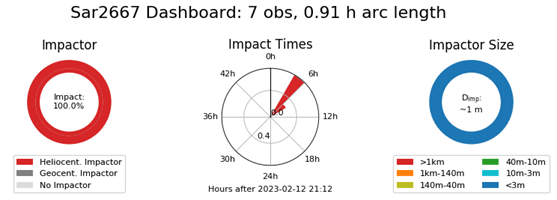
First impact assessment by ESA’s tool Meerkat as reported at 21:33 UTC with only 7 measurements, already indicating an impact probability of ~100%. Credit: ESA / PDO
Over the next seven hours, astronomers around the globe observed the Earth-bound object and pinpointed its ‘impact corridor’ over the Channel with a trajectory going from west to east. The object continued to be observed until just ten minutes before impact, only five minutes before it fell into Earth’s shadow becoming ‘invisible’.
On impact, the beautiful fireball lit up the skies within the expected time window (at 02:59 UTC) and location. Observations came mostly from southern UK and France but also from Belgium, the Netherlands and even Germany. It is likely that some fragments of the meteoroid could have survived its atmospheric journey and landed somewhere onshore, close to the coast north of Rouen in Normandy, France.
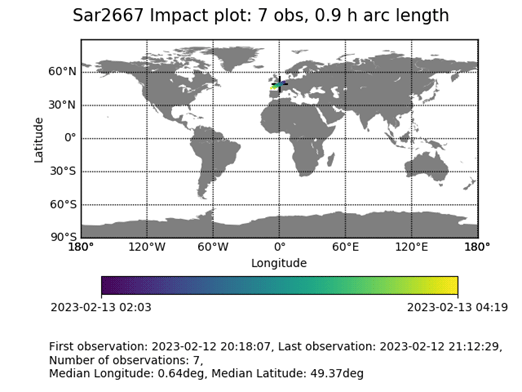
First impact corridor reported by ESA’s tool Meerkat as reported at 21:33 UTC, with the actual impact time at 02:59 UTC in the middle of the uncertainty window. Credit: ESA / PDO
The team at ESA’s Planetary Defence Office contributed to this historic event both with timely notifications from the ‘Meerkat’ warning system and use of a network of optical telescopes established for just these occasions.
As it becomes more common that we can predict these small, stunning shooting stars in our skies, more people can be in the right place at the right time to witness a phenomenon only few have been lucky enough to spot before.
Of course, one day we’ll find an imminent impactor that isn’t one meter in size, but perhaps 100. To protect ourselves, as NASA’s DART mission has shown is possible and ESA’s Hera Mission will build on, we need to see them coming.

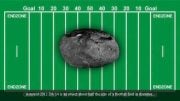
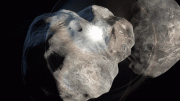
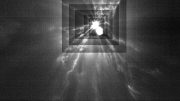
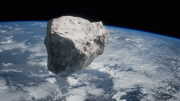
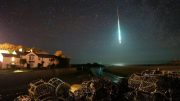
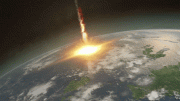
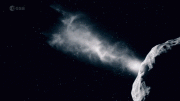
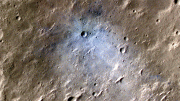
How often are we trying to actually intercept or destroy an incoming asteroid?
If our destruction is meant to come from an Astroid Impact, so be it; it couldn’t be any worse than death from a political folly.